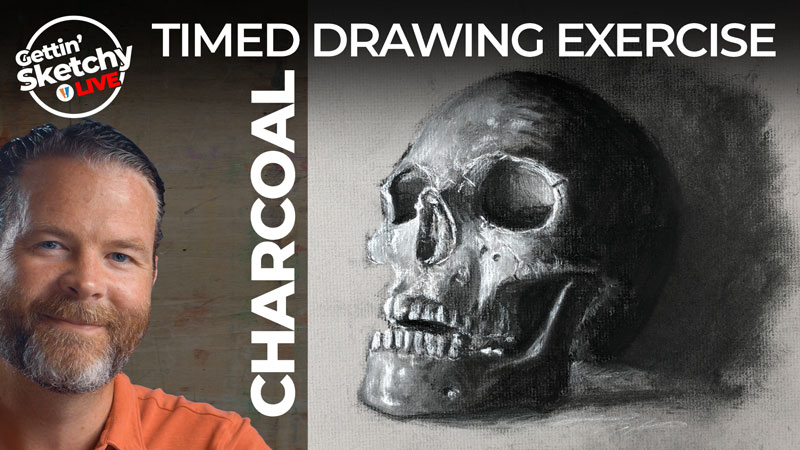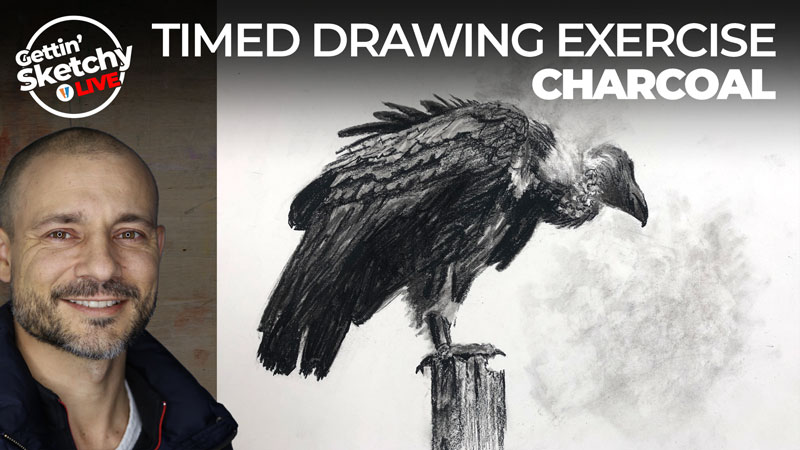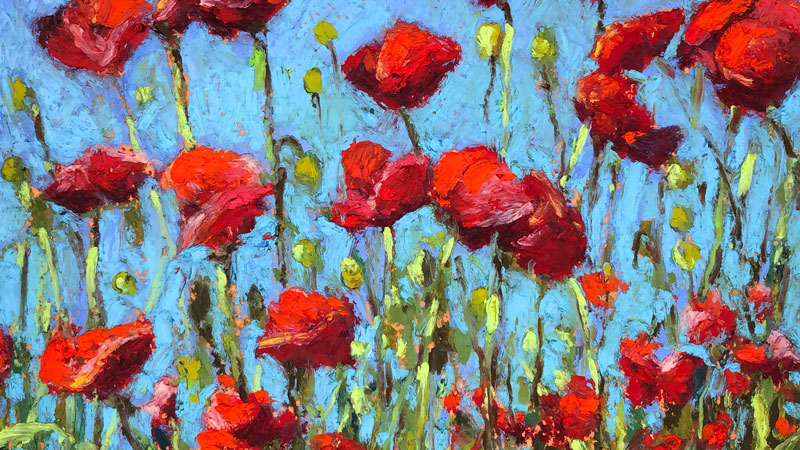Gettin’ Sketchy – How to Draw a Landscape with Charcoal – Season 3 Episode 7
This episode aired live on YouTube on March 3, 2021.
Gettin’ Sketchy is a live broadcast on YouTube where we attempt to create a drawing in 45 minutes. Because of the time constraint, the drawings are closer to “sketches”. Some mediums result in images that feel more finished or refined, while others are considerably looser.
Charcoal, the medium used in this episode, is a looser medium but is capable of producing a surprisingly “finished” look in a short period of time. This is partly due to the rich darks that charcoal produces, but also because of the forgiving nature of the medium.
Here’s a look at the completed image…
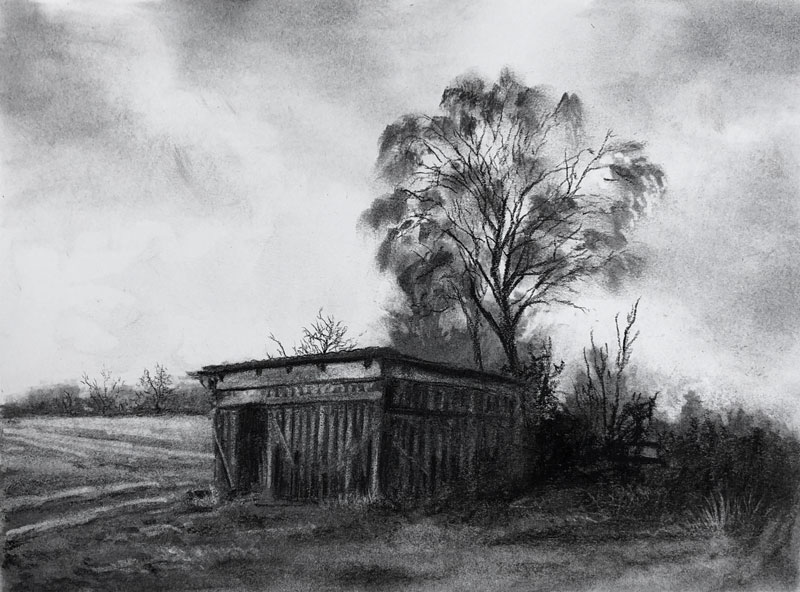
Thinking Like a Painter
Charcoal is clearly a drawing medium, but we can think like a painter when we use it. Opaque painting mediums like acrylics and oils allow the artist to cover applications and make changes easily. In other words, these painting mediums are rather forgiving. Charcoal is similar in this aspect.
Vine charcoal is easily erased and also easily covered with additional applications of charcoal. With oils, it’s easy to create transitions in values. The same is true for charcoal, due to its powdery nature. We can effortlessly manipulate the vine charcoal on the surface, moving it around with a blending stump, erasing, and refining with additional applications.
And just like with an oil painting, we start looser and then refine the drawing as we develop it. The details gradually emerge as we work the material. This means that the drawing develops in stages with each stage being slightly more refined than the last. We can stop at any point (or at any stage) and the drawing may still feel “finished”, just with less details.
Working with Values
Value is one of the seven elements of art. Most artists will argue that value is the most important of the seven. I definitely agree with this and consider value to be more important than line, color, or form. Value is defined as the darkness or lightness of a color.
The reason why value is so important is because it is the way we see and understand the world around us. Value also influences other elements such as form, texture, space, and color.
It is the darks and lights that we see, the values, that inform us of the light within the scene. And light tells us about the forms and textures. Lighter values translate as highlights while darker values translate as shadows. The relationships between the highlights, shadows, and middle values communicate the light to our viewers and in turn – the forms and textures.
This is why value is so important to our success. When we create a drawing, we need to capture the values found on our subject and within the scene we are depicting in a drawing.
Why Charcoal is Great for Manipulating Values
As I’ve mentioned charcoal is a great medium for developing values. We’ve discussed how easy it is to manipulate it. Erasing to make lighter values is easily accomplished with an eraser and moving the charcoal around on the surface is effortless. But what makes charcoal so special is the richness of the darks.
We see the world as a full range of value. This means we see the darkest darks and the lightest lights with a range of middle values in between. In order to capture this full range, we need to use a medium that is capable of producing these tones. Charcoal excels at this due to its rich blacks.
While graphite is the most popular choice for sketching, it simply cannot produce tones as dark as charcoal can. In fact, graphite is actually gray and will never be truly “black”. This gives charcoal an advantage over graphite for producing convincing drawings. However, graphite is much cleaner and easier to “tame”. As we all know, charcoal is very powdery and can make a mess.
Here are a few lessons and lesson series that provide more information on charcoal and its usage. Some of these lessons require membership…
- How to Draw a Raven with Charcoal
- The Secrets to Drawing – Charcoal (Membership Required)
- Charcoal Drawing Techniques
- How to Draw an Ostrich with Charcoal – Lesson Series (Membership Required)
- Landscape Drawing with Charcoal – Lesson Series (Membership Required)
Photo Reference
The photo reference used for this drawing exercise is from Pixabay.com. The original image was altered by cropping and the contrast was enhanced.
Here’s a look at the photo reference…
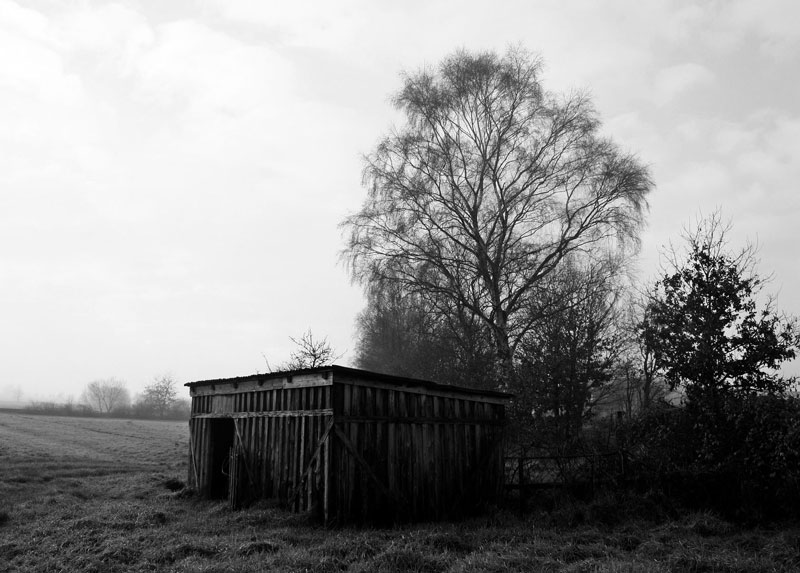
Timed Drawing of a Landscape with Charcoal – Conclusion
As we see, charcoal is a wonderful medium for sketching. It is messy and loose, but these are the very characteristics that make it so good. It’s easily manipulated and creating a full range of value is a breeze. Charcoal is a forgiving medium and is a nice “bridge” to opaque painting mediums like acrylics and oils.
Charcoal doesn’t get as much usage as more popular sketching mediums like graphite, but this is due mostly to fear (of a new medium) and the messy reputation that charcoal carries with it. People also mistakenly believe that it is difficult to control. But hopefully, you see that this isn’t the case and charcoal is actually very easy to control. It just requires a different approach than using a pencil.
If so, join over 36,000 others that receive our newsletter with new drawing and painting lessons. Plus, check out three of our course videos and ebooks for free.


